0 引言
1 原油物性与有机地球化学特征
2 烃源岩地质与有机地球化学特征
表1 营尔凹陷下白垩统烃源岩有机地球化学特征Table 1 Organic geochemical characteristics of the Lower Cretaceous source rocks of Ying’er Sag |
| 层位 | TOC/% | (S1+S2)/(mg/g) | 氯仿沥青“A”/% | HC/(×10-6) | 母质类型 | R O/% | 热演化阶段 |
|---|---|---|---|---|---|---|---|
| K1 z | Ⅱ1型为主 | 0.46~1.04 0.68/84 | 未成熟—成熟阶段 | ||||
| K1 g 3 | Ⅱ型为主,部分为Ⅰ型 | 0.44~1.57 0.71/95 | 成熟阶段 | ||||
| K1 g 2 | Ⅱ1—Ⅲ型 | 0.49~1.59 1.05/23 | 成熟—高成熟早期 | ||||
| K1 g 1 | Ⅱ2有机质为主,少量Ⅰ型和Ⅲ型 | 0.76~1.78 1.25/21 | 成熟—高成熟阶段 | ||||
| K1 c | Ⅱ2有机质为主,少量Ⅰ型和Ⅲ型 | 0.72~1.88 1.15/22 | 成熟—高成熟阶段 |
|
3 原油成因类型划分及来源分析
图3 原油三环萜/五环萜—γ-蜡烷/C30藿烷关系Fig.3 Relationship of tricyclic to pentacyclic terpane ratio and gamacerane to hopane ratio of crude oil samples |
图4 原油Tm/ Ts—γ-蜡烷/C30藿烷关系Fig.4 Relationship of Tm to Ts ratio and gamacerane to hopane ratio of crude oil samples |
4 原油类型与烃源岩关系
图12 酒参1井和营参1井埋藏史Fig.12 A section showing the burial and evolution history of organic matter in Wells Jiucan1 and Yingcan1 |
图13 酒泉盆地营尔凹陷构造演化Fig.13 Tectonic evolution map of Ying’er Depression in Jiuquan Basin |
图14 营尔凹陷下沟组K1 g 3(a)和K1 g 1(b)优质烃源岩厚度和油层分布叠合Fig.14 Overlapping maps of thickness of high-quality source rocks and oil layer distribution in K1 g 3 (a) and K1 g 1 (b) in Ying’er Sag |



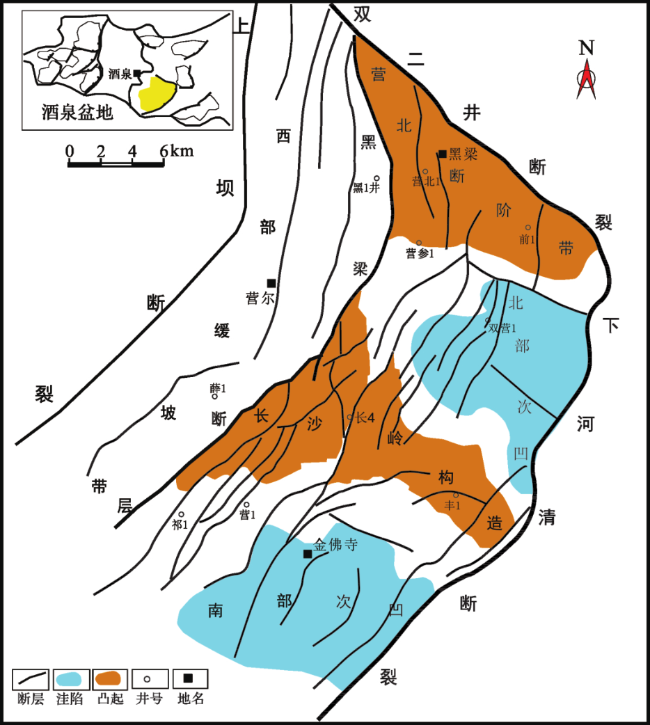
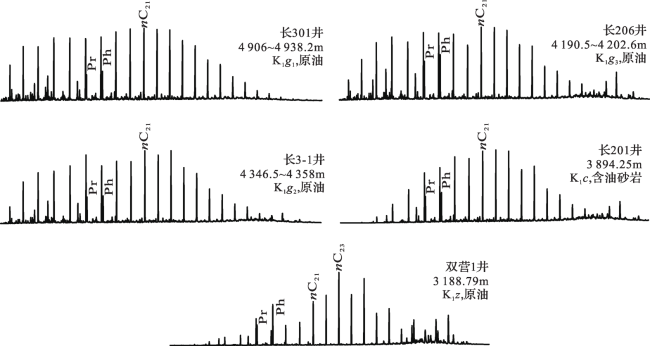
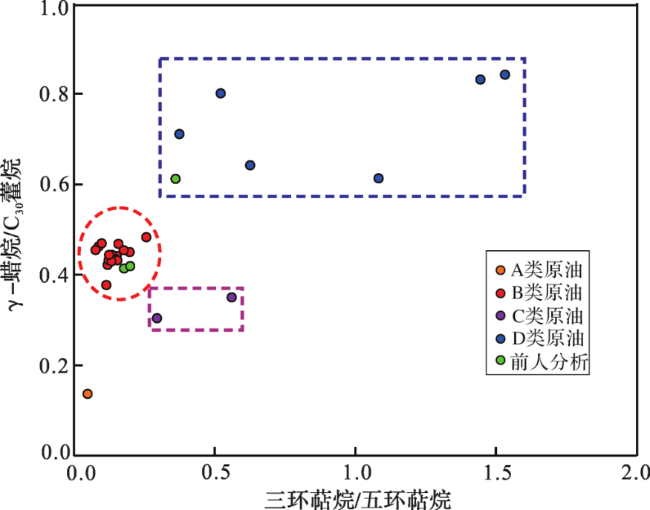
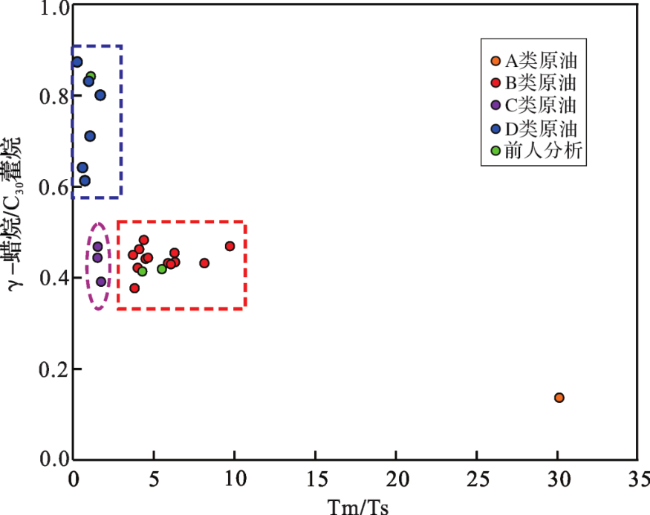
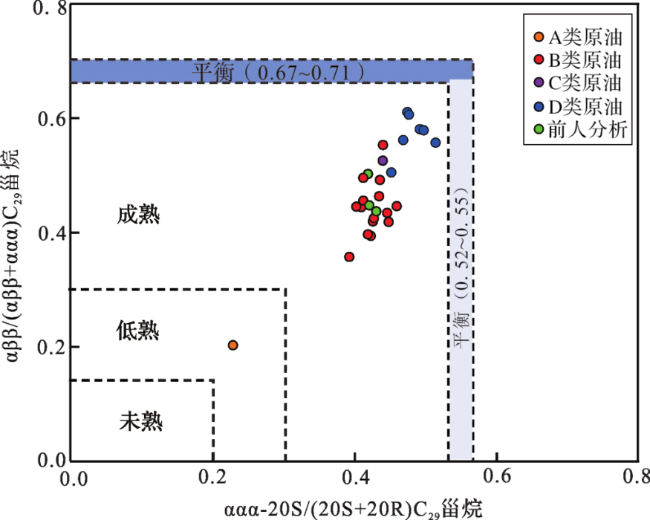
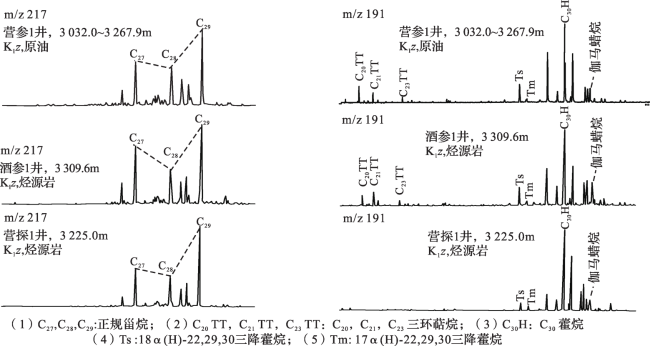
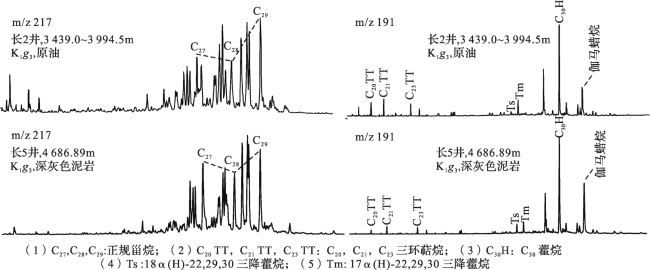
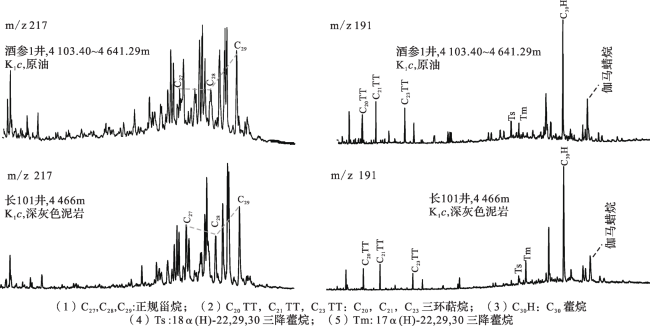
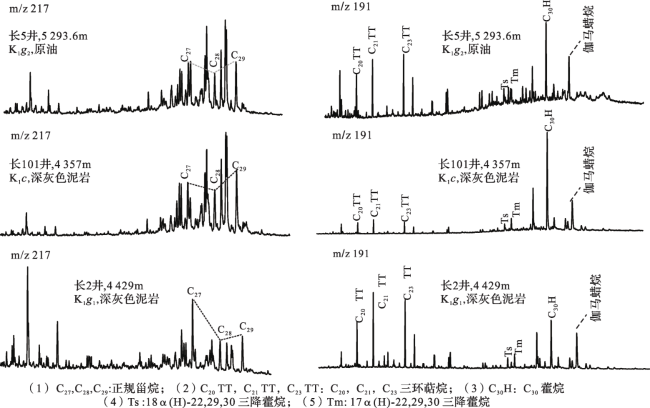
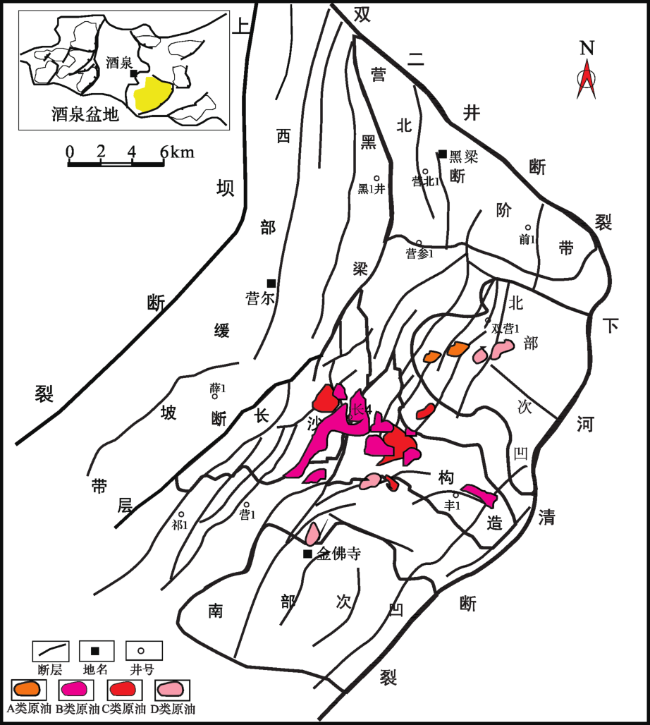
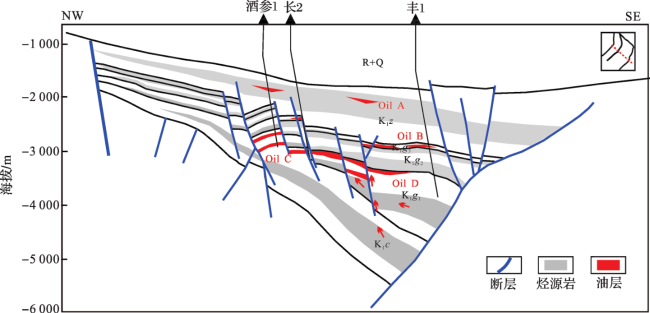
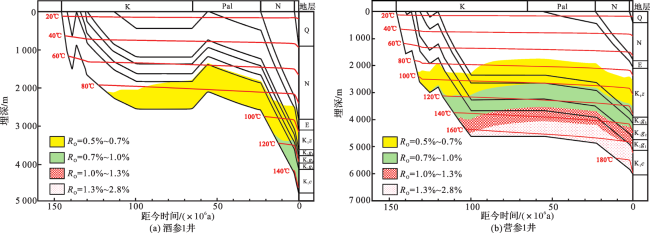
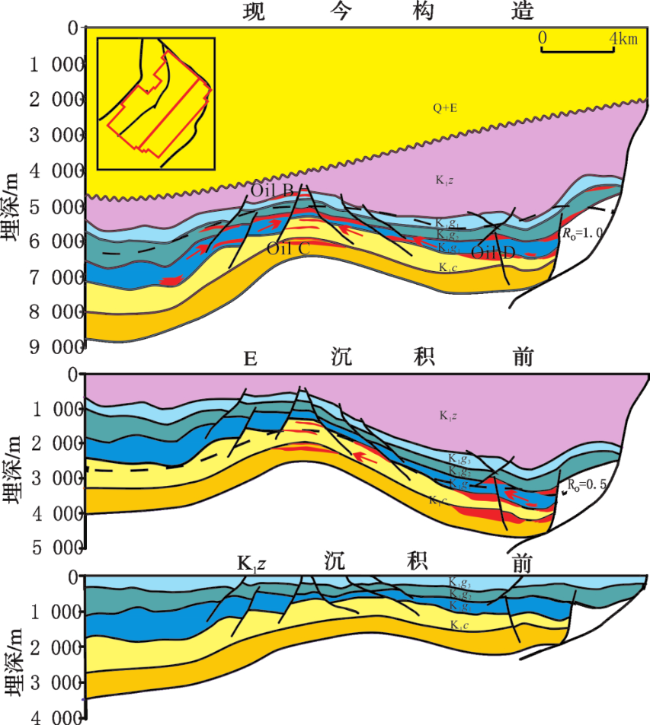
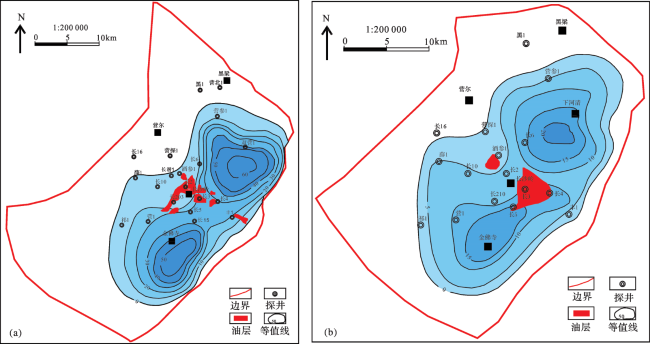
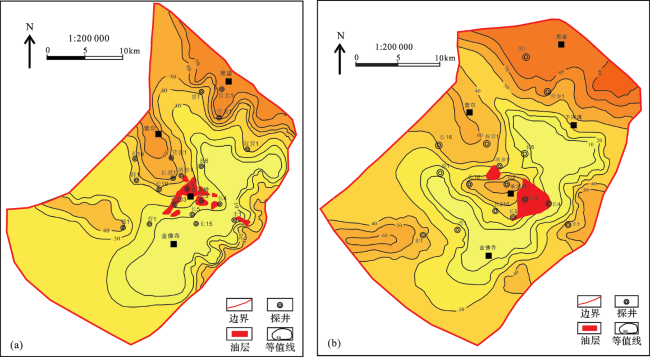
 甘公网安备 62010202000678号
甘公网安备 62010202000678号